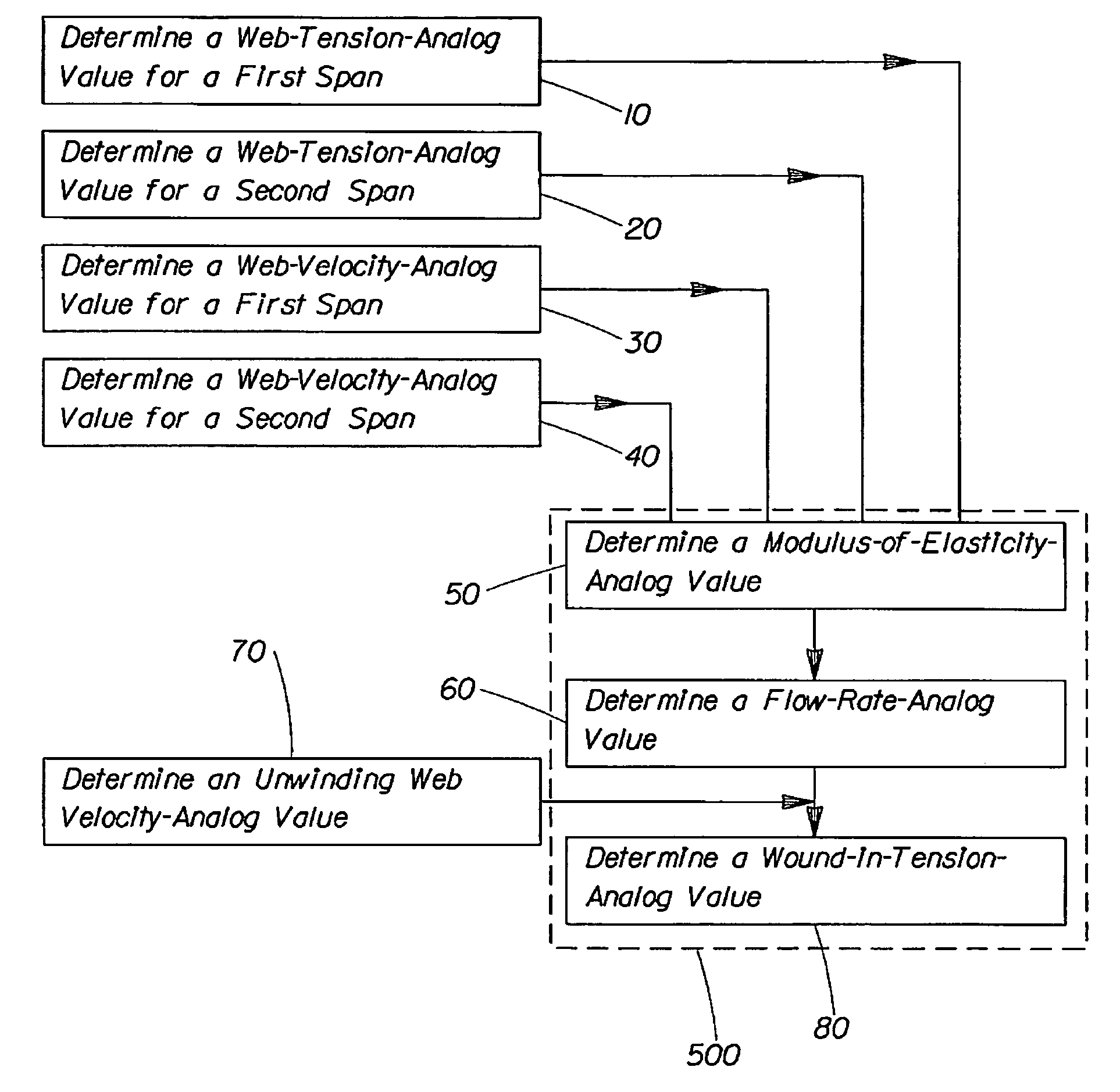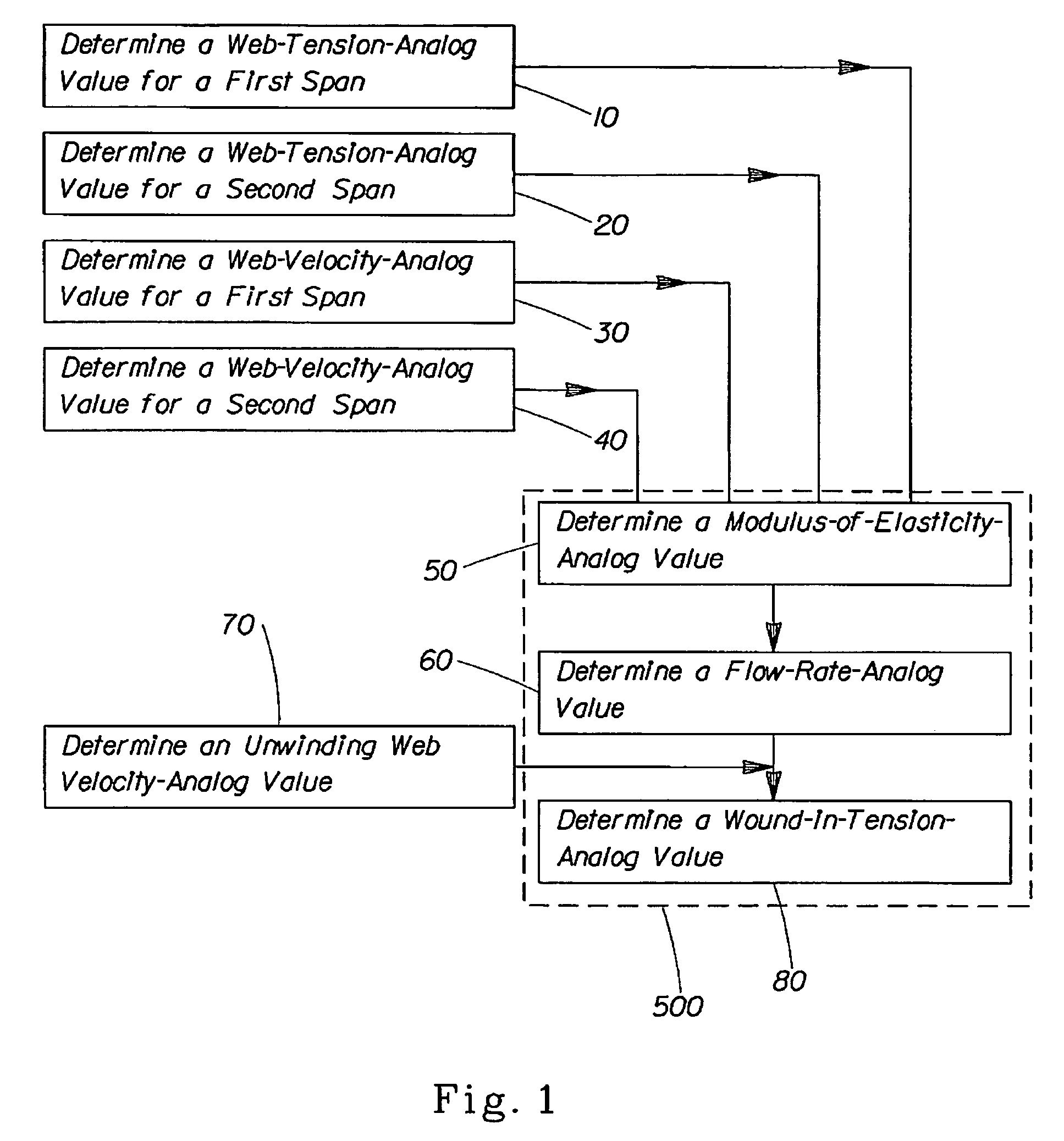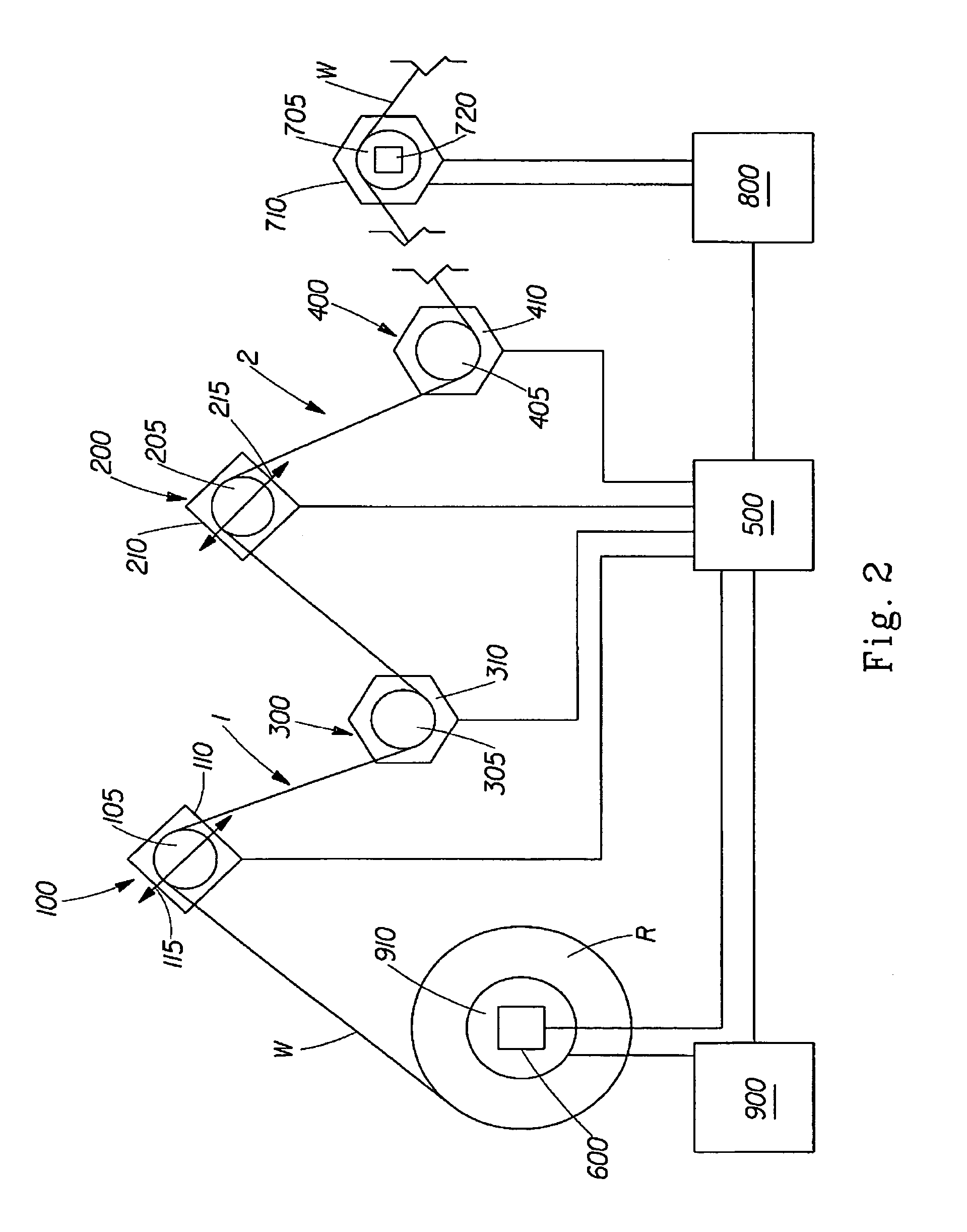Method of determining a modulus of elasticity of a moving web material
a technology of modulus and elasticity, applied in the direction of tension measurement, force/torque/work measurement, instruments, etc., can solve the problems of web breakage, web material variation, and increase the effect of web handling productivity
- Summary
- Abstract
- Description
- Claims
- Application Information
AI Technical Summary
Benefits of technology
Problems solved by technology
Method used
Image
Examples
example 1
[0097]Paper web is unwound from a large parent roll for converting the web into a consumer paper product. The web is wrapped around a first idler roller. The idler roller is coupled to a pair of ABB Pressductor load cells model number PFTL301E. The Pressductor load cells receive control power from, and provide output signals to, an ABB Tension Electronics unit PFEA111. The Tension Electronics unit low-pass filters the input signals. The load cells and tension electronics unit are available from ABB, Brewster, N.Y. The Tension Electronics unit amplifies the signal from the load cells yielding a 0–10 Volt analog output signal. The output of the Tension Electronics unit is hard wired to an input circuit board of a Robox RBXM Modular Motion controller available from Robox S.P.A., Ticino, Italy.
[0098]Velocity inputs are derived from encoders coupled to drive motors and also to powered rollers. The drive motors and powered rollers are components of the web handling system. A Siemens drive...
PUM
| Property | Measurement | Unit |
|---|---|---|
| time | aaaaa | aaaaa |
| time | aaaaa | aaaaa |
| modulus-of-elasticity | aaaaa | aaaaa |
Abstract
Description
Claims
Application Information
 Login to View More
Login to View More - R&D
- Intellectual Property
- Life Sciences
- Materials
- Tech Scout
- Unparalleled Data Quality
- Higher Quality Content
- 60% Fewer Hallucinations
Browse by: Latest US Patents, China's latest patents, Technical Efficacy Thesaurus, Application Domain, Technology Topic, Popular Technical Reports.
© 2025 PatSnap. All rights reserved.Legal|Privacy policy|Modern Slavery Act Transparency Statement|Sitemap|About US| Contact US: help@patsnap.com



